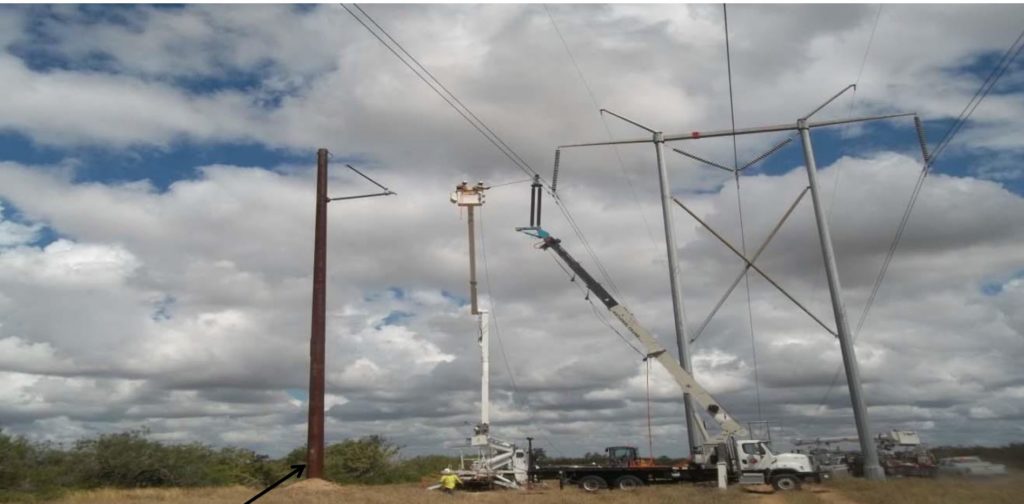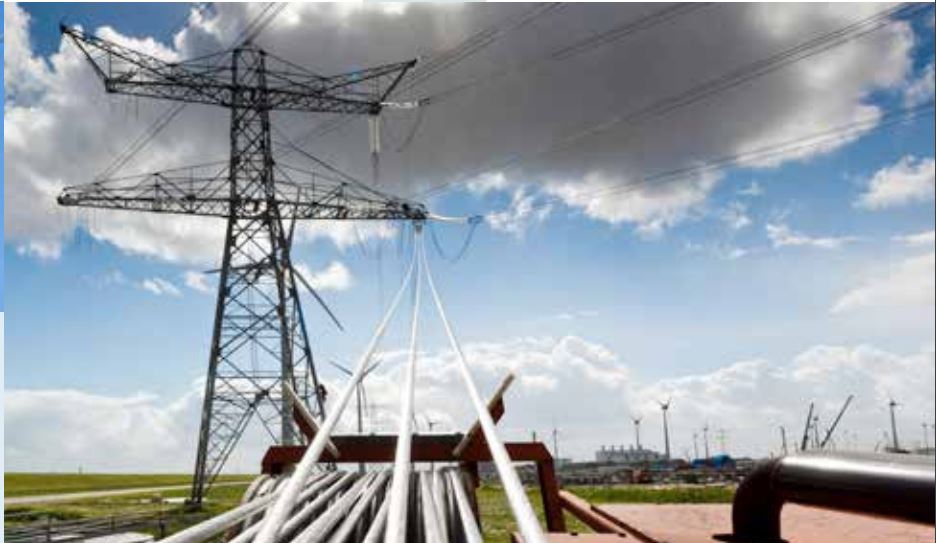More variable resources, wind and solar, will require more electric transmission. It will be needed to balance the variability over larger areas, and to bring remote generation like offshore wind to the load.
The main challenge to building more transmission lines is the difficulty to get necessary permits to build. Added to the challenges is that in the most electrically congested areas it tends to be the most difficult to take existing transmission lines out-of-service for any extended time.
There are alternatives. They come with different pros and cons. HVDC (High Voltage Direct Current) is attractive with its smaller footprint and lower losses, but it has the cost for the converter stations. Consequently, HVDC is mostly used for bulk energy transfer over long distances. However, for submarine applications with cables HVDC becomes competitive over HVAC (High Voltage Alternating Current) cables already at relatively short distances. In fact, for HVAC cables the large cable capacitance limits the maximum possible transmission distance.
For HVAC transmission lines one option is to replace the overhead line with an underground cable, but it is much more costly and for the reasons mentioned earlier has limitations in terms of distance. High Temperature Superconductive (HTS) cables can transfer five times more power than regular cables, but it comes with a cost of four times higher. So far HTS has only been deployed in a very few special case projects for very short distances.
Another option to get more power for an existing right-of-way could be to convert the HVAC transmission line to an HVDC lines It could increase the capacity by 50 – 100 %. Conceptually it is very intriguing, but pragmatically very challenging due to cost (converter stations) and conversion process.
The best option to increase capacity of an existing HVAC transmission line is by reconductoring using high performance conductors, also called High Temperature Low Sag (HTLS) conductors. It can increase the capacity by 50 – 100 % and/or substantially reduce line losses.
In the 10 plus years HTLS conductors have been available several reconductoring projects have been made. Probably the most visible project was two 345 kV transmission lines in the Lower Rio Grande Valley of Texas being reconductored while the lines remained energized. American Electric Power (AEP), the owner and project leader, was awarded Edison Electric Institute’s (EEI’s) 2016 Edison Award for this project.

For the 240 miles of conductor they used ACCC® HTLS conductor.
Nevertheless, the most comprehensive approach of reconductoring was launched in 2018 by TenneT in the Netherlands. The project called Beter Benutten Bestande 380 kV (Better Use Existing 380 kV) targets to strengthen parts of the existing bulk energy transmission system in the Netherlands by reconductoring to HTLS conductors. The first section is Lelystad – Ens is planned to be completed already in the fourth quarter this year. It will increase the capacity from 2500 MW to 4000 MW.
TenneT’s Beter Benutten Bestand 380 kV should be seen in the context of massive offshore wind integration to the Dutch and German electric systems. TenneT, who serves the Netherlands and a substantial part of Germany, has become a world leader in this respect. Already 7 GW of offshore wind is connected to the German grid. It will grow to 10 GW by 2025. Also offshore wind to the Netherlands’ system is growing quickly, expected to reach 3.5 GW by 2023.

TenneT has also several submarine HVDC ties with neighboring countries such as Nordlink 1400 MW between Norway and Germany, BritNed 1000 MW between Great Britain and the Netherlands, NorNed 700 MW between Norway and the Netherlands, and COBRA cable 700 MW between Denmark and the Netherlands.
It may still just be the beginning. In studies how Europe will meet the Paris Agreement on CO2 emissions in 2045 it has been estimated some 230 GW of offshore wind needs to be developed. The best opportunity, up to 100 GW, is thought to be the Doggers Bank in the North Sea. For such scenarios TenneT is looking at new concepts such as “Hub & Spoke” with 30 GW of hubs located on artificial islands. It may remain a vision, but with all that TenneT has achieved so far, it seems like a fair bet that TenneT will continue to be a leader.
More read:
Tennet. Beter Benuten Bestande 380 kV. Factsheet. https://www.tennet.eu/fileadmin/user_upload/Our_Grid/Onshore_Netherlands/Factsheet_Beter_benutten_OKT2018_web.pdf;
Navigant Research White Paper: Advanced Overhead Conductors. https://s3.amazonaws.com/ctc-media/wp-content/uploads/20181212123300/Navigant-Research-CTC-White-Paper1.pdf
Tayeb Meridiji et al, SNC-Lavalin. Montreal. High Voltage DC Conversion. https://ieeexplore.ieee.org/document/8694046;